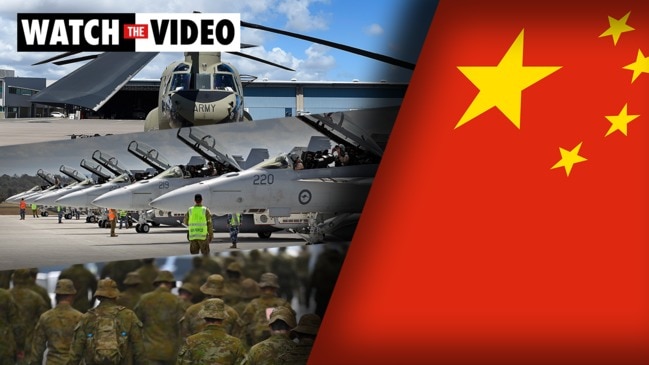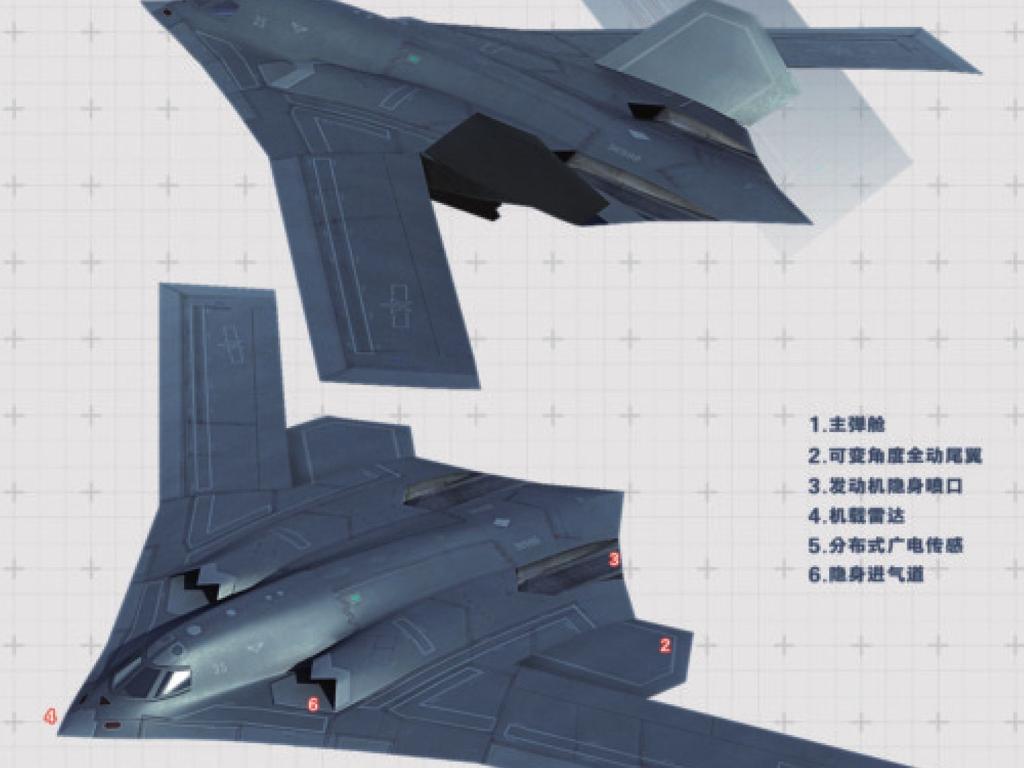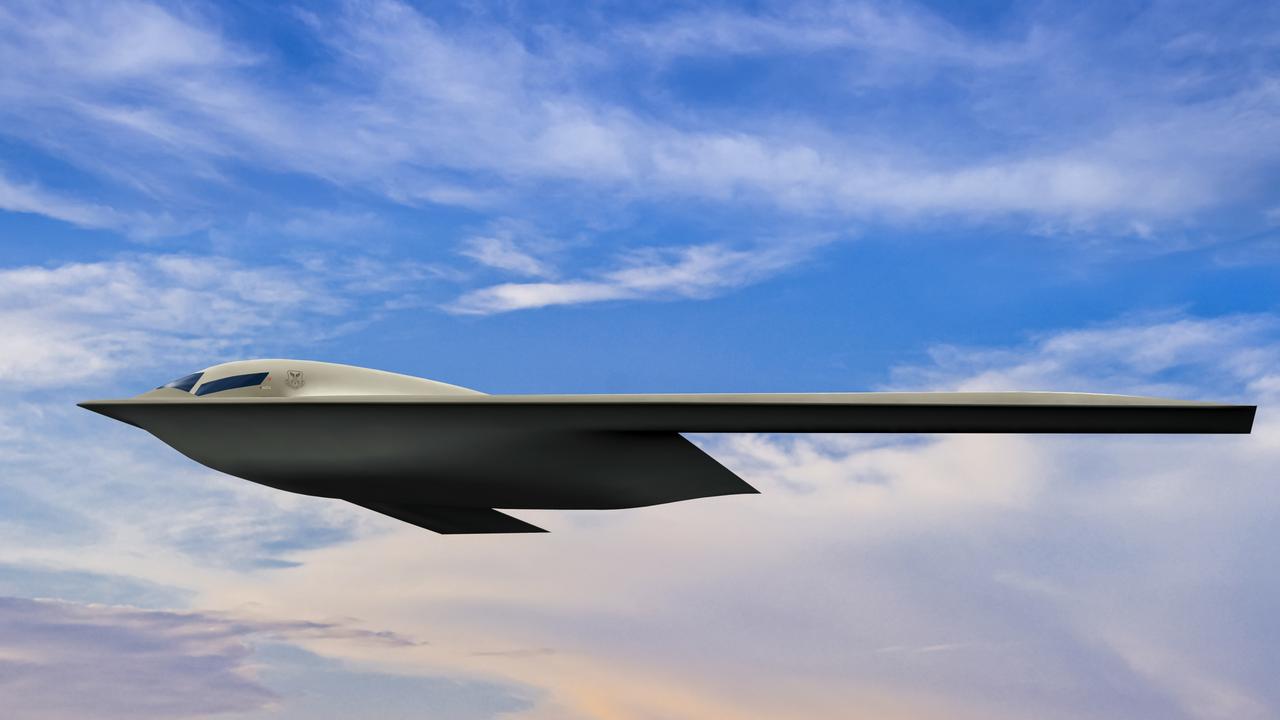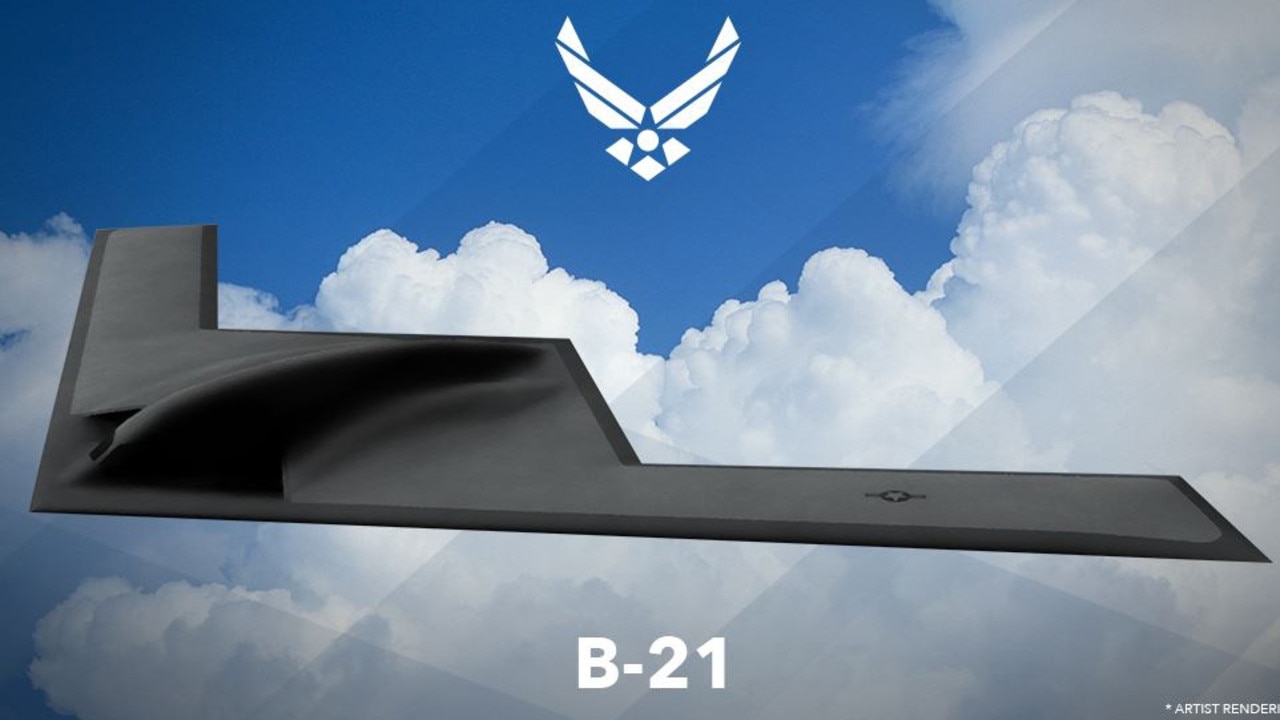US Air Force appears to troll China with photos of secret bomber B-21 Raider
A very odd photo of the USA’s latest big stealth bomber was dropped by the US Air Force and there’s more than a hint they’re trolling China.

It has a ‘beak’ like a bird. Its surface seems seamless. And it’s winking. Is the US Air Force trolling China with a new image of its next-generation stealth bomber?
The B-21 Raider project is one of the most secret on Earth.
We know at least two are nearing completion. Dozens more are on the assembly lines.
They’re replacing America’s aging and dilapidated fleet of strategic bombers – from the 66-year-old B-52 Stratofortress to the 30-year-old B-2 Spirit stealth bomber.
But no actual photo of the new design has yet been released.
And that’s no accident. Details as simple as shape and size can reveal clues about a stealth aircraft’s radar profile. And that can give opponents a headstart on designing countermeasures.
Aircraft manufacturer Northrop Grumman has, instead, been drip-feeding the world with tantalisingly vague computer-rendered promotional posters.
The latest dropped this week. It’s … odd.
RELATED: Australia ‘virtually defenceless’ against China’s new bomber
An artist rendering of the B-21 Raider was released, showing an interpretation what what the new bomber would look like based on the aircraft's design. https://t.co/B8M9bzdQsx
— U.S. Air Force (@usairforce) July 7, 2021
It looks like a sleek, grey swallow swooping over southern California’s Edwards Air Force Base instead of a next-generation bomber.
Importantly, the USAF notes: “As with past renderings, this rendering is an artist’s interpretation of the B-21 design.”
So its looks are almost certainly deceptive.
But, at the very least, it demonstrates the B-21 is no bat-winged B-2 clone.
Not only is it smaller, but its shape also demonstrates some significant evolution in the delicately balanced realm of stealth avionics.
Fighting for advantage
The B-21 isn’t the only big stealth bomber in the works. China is racing to build its own. It’s called the H-20. We also know very little about it other than it was “inspired” by the B-2 Spirit. Its prototypes are likely already flying.
A rendering of Beijing’s contender was also recently released by state-controlled media. It shows a sharp-edged shape that integrates a conventional vertical tail assembly into the swept airframe.
The B-21 image shows it has no tail surfaces, like its B-2 predecessor. While making flight much easier, such control surfaces generally add significantly to the radar-reflective surface area.
RELATED: ‘Startling’ find deep in China desert

The new US Raider appears to have a longer, thinner nose.
Its unusual cockpit window arrangement seems to convey a wink – or a frown.
It gives the aircraft a somewhat ungainly view.
It also seems redundant: How much use would such a bent window be to aircrew – if it is a window at all. The F-35 Stealth Fighter, for example, already has a 360-degree camera system that allows the pilot to “look through” the aircraft itself.
The B-21’s trailing edge does away with the B-2’s iconic “sawtooth” rear-end for a decidedly more birdlike flat tail.
Such angles are essential. These determine the direction any incoming radar beams are bounced.
So is the skin. This can absorb some energy, making the ‘bounce’ much weaker. But it’s likely limited to a few specific wavelengths.

We don’t see the B-21’s engine air-inlets. Nor its exhausts. These are particularly important as they both offer a break in the aircraft’s surface that will reflect radar, as well as a means of hiding the highly reflective fans of jet engines.
China’s H-20 render, also unlikely to be accurate, indicates it uses a B-2-like sawtooth inlet to break up any incoming radar beams.
Killer robot?
The US Air Force has released an updated fact sheet detailing what it wants us to know about the B-21.
It calls the Raider project “a component of a larger family of systems for conventional Long-Range Strike, including Intelligence, Surveillance and Reconnaissance, electronic attack, communication and other capabilities.”
That may mean the airframe itself may be the basis for a whole range of aircraft – be they drones or crewed. Or that it will work in tandem with large drones, such as the proposed RQ-180, as “Loyal Wingmen”.
“The built-in feature of open systems architecture on the B-21 makes the bomber effective as the threat environment evolves,” the factsheet states.
This could mean anything from flexible software design to modular components.
The B-21 is also rumoured to be “crew optional”.
That means it has an on-board Artificial Intelligence (AI) capable of flying the aircraft, navigating, dodging threats – and identifying targets to attack.

The USAF says the B-21 can deliver “a broad mix of standoff and direct-attack munitions”, which means cruise missiles, hypersonic missiles and glide bombs.
Among the mix will be a new long-range nuclear-armed cruise missile.
“Designed to perform long-range conventional and nuclear missions and to operate in tomorrow’s high-end threat environment, the B-21 will be a visible and flexible component of the nuclear triad,” the USAF fact-sheet states.
But the aircraft itself has to be able to evade an incredibly complex mix of radars, infra-red sensors, satellite-based systems and over-the-horizon technology. At least long enough to deliver its payload.
More than meets the eye
The two prototype B-21 Raiders are expected to undergo extensive testing in the next few years. The USAF hopes to replace its increasingly troublesome B-1 and B-2 bombers within the decade.
“The Air Force plans to incrementally replace the B-1 Lancer and the B-2 Spirit bombers to form a two-bomber fleet of B-21s and modified B-52s. The B-21 program is on track to deliver B-21s to the first operational base, Ellsworth AFB, South Dakota, in the mid-2020s,” says the USAF.
The ancient B-52 is getting new engines to keep it in the “bomb truck” role – hauling heavy loads of weapons wherever needed. If safe enough.
Analysts put the anticipated total force of B-21s at anywhere between 100 and 200 aircraft.
Each aircraft is expected to cost about $US673 million ($A900 million) each.
The need is urgent.
The existing fleet of 20 B-2 Spirit stealth bombers is enormously expensive to maintain. Much of its original manufacturing equipment has been scrapped or retired. That means replacement parts have to be individually handcrafted.
The 45 B-1 Lancer low-level bombers have reportedly been recording worryingly low availability rates. Its swing-wing design is also proving difficult to keep operational as decades of stress wears away at its structure and components.
The 76 B-52s, however, having been built to World War II-era mass-production standards, are proving comparatively easy to repair, upgrade and maintain.
All this is putting immense pressure on the B-21 program.
“We can’t get the B-21 fast enough,” Lieutenant General Clinton Hinote told a US government hearing. “The risk in the bomber portfolio is high. We’ve got to do better. We’ve got to accelerate the B-21 capability as quickly as we can.”
Meanwhile, precisely what the B-21 looks like isn’t likely to be revealed until next year, when it’s due to enter service.
Jamie Seidel is a freelance writer | @JamieSeidel




